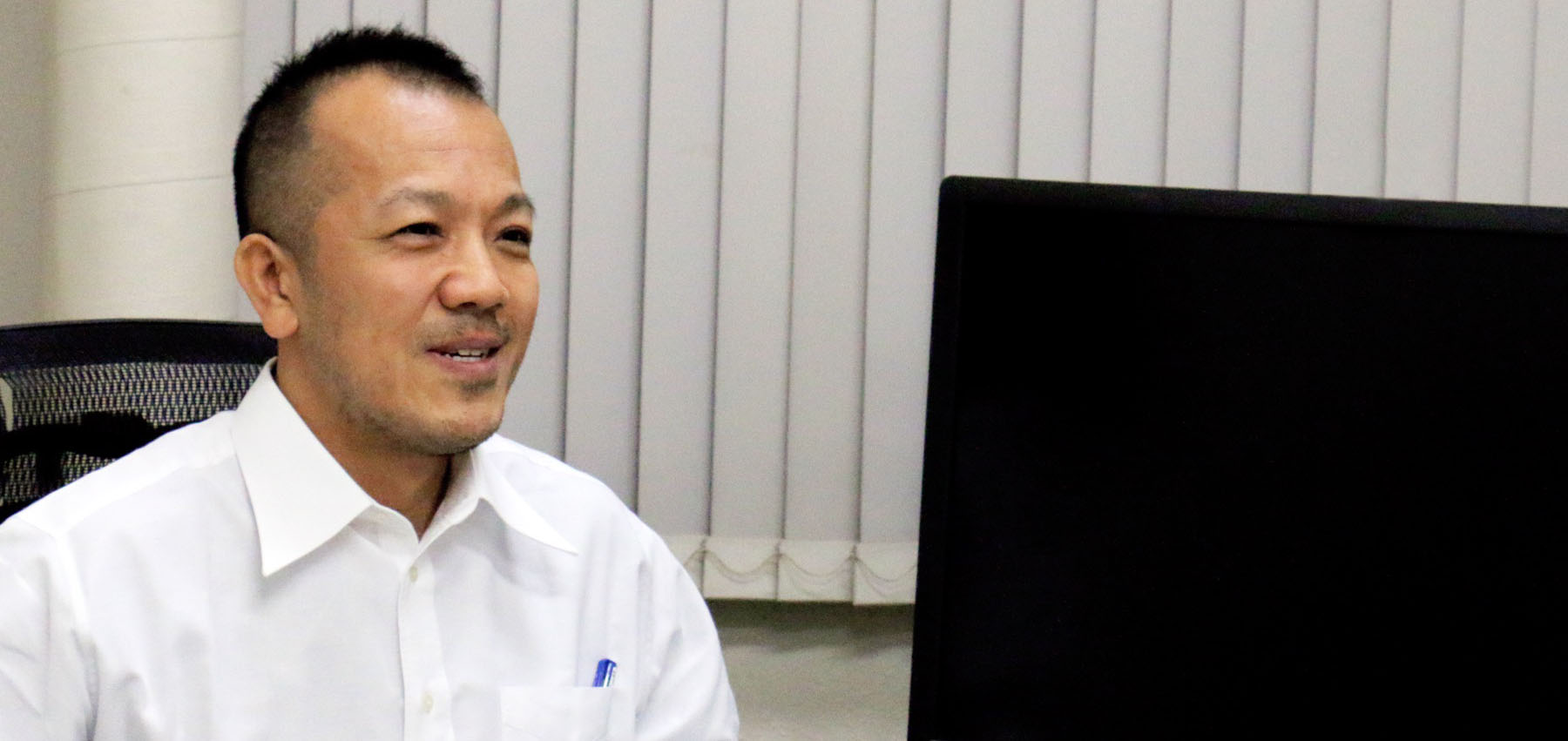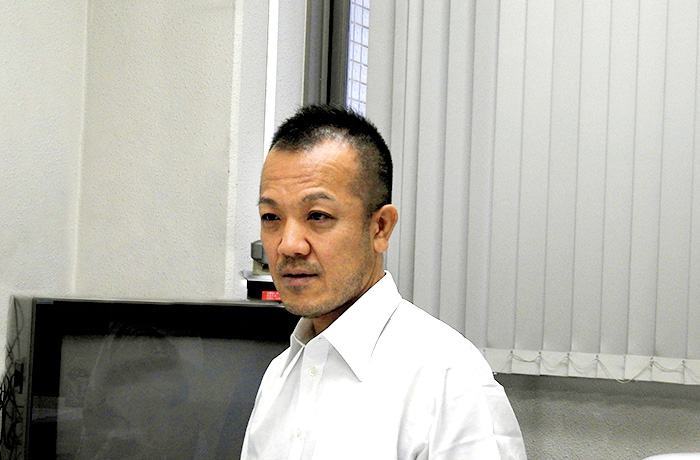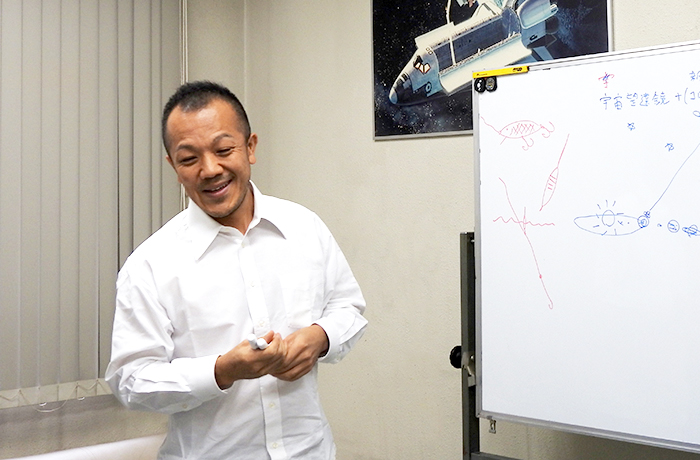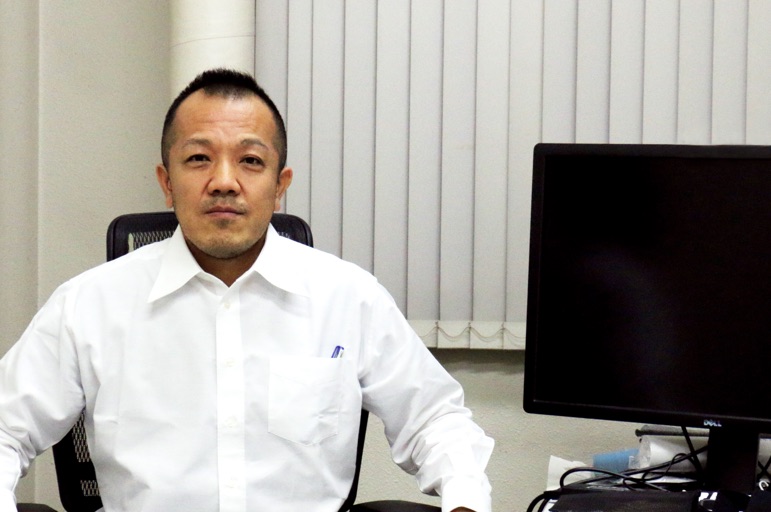
Vol. 4 / 2018.01.26
JUICE Player Interviews
and evolution of planets
The role of the Ganymede Laser Altimeter (GALA)
——The fourth interview is with Associate Professor Keigo Enya of the Institute of Space and Astronautical Science, who is the Pre-Project Manager on the Japanese side for the GALA (Ganymede Laser Altimeter) JUICE mission payload.
Japan is involved in four of the instruments to be installed on JUICE, including GALA, which you are managing. Please can you explain GALA to us?

Dr. Enya: JNumerous researchers and companies have been promoting the development of GALA, which will be installed on JUICE. As a simple explanation of GALA as an instrument, it will measure the terrain of the Jupiter satellite Ganymede, and will form a precise morphological map.
GALA emits a laser to the surface of the satellite from orbit, and receives the reflected light. The instrument uses the time delay between emission and reception to measure distance. Although only one part of the surface of the satellite can be measured with a single distance measurement, a morphological map of Ganymede as a whole will be formed by intently making measurements from orbit. Furthermore, we are attempting to ascertain even minor morphological changes and distortions on the surface of Ganymede through continued observation over a longer period.
——What will be understood as a result of this?
Dr. Enya:First, I will talk about some general matters. An understanding of the terrain in 3D, including craters and other undulations, will be obtained by means of the GALA observations. Each type of terrain indicates the reasons for such formations, its origins, and its evolution, which we will decipher.
Through the all-out mobilization of data from other JUICE instruments, we will pursue fundamental questions with regard to Ganymede, the Jupiter system, and even the solar system, such as where the materials came from that formed them, how they were formed, and how they evolved.
——Are there any scientific aims that are unique to GALA?
Dr. Enya:Yes, there are. Of the Galilean satellites of Jupiter (the four main satellites: Io, Europa, Ganymede and Callisto), JUICE will make detailed observations of Ganymede, in particular. Ganymede is the largest of the Galilean satellites and the largest satellite in the solar system. Also, as it is cold due to being distant from the Sun, the surface is frozen, which is why it is called an icy satellite. However, it has been argued that there may be oceans of liquid water (subsurface oceans) under the ice.
If there are subsurface oceans, the same principle as the ebb and flow of tides on Earth (tidal power) will cause major flows invisible from the outside that cause minor strains and changes in the overall shape of Ganymede. If there are no subsurface oceans, there will be no such activity. With GALA, we are attempting to investigate these subsurface oceans by observing the strains and changes in the overall shape of Ganymede.
——What are the characteristics of GALA as an instrument?
Dr. Enya:
It is easier to understand the characteristics of GALA as an instrument in comparison to general instruments for planetary exploration and astronomical satellites such as cameras and telescopes. First, GALA is an instrument that specializes in a single function, that is, the measurement of distance.
This is in contrast to many cameras and telescopes that are used to “view everything.” Both cameras and telescopes are used to receive travelling light. On the other hand, GALA has the active aspect of illuminating Ganymede by projecting a laser. Such instruments are in the minority.
Also, GALA is being developed through international cooperation with roles being assigned to Germany, Japan, Switzerland and Spain, which is the same for many other instruments on JUICE.
Research stance and past studies
——Before becoming involved with GALA, what kind of research and instrument development were you originally working on?

Dr. Enya:
Prior to GALA, I developed instruments for the observation of planets outside the solar system to be equipped on space telescopes. This includes coronagraphs, for example. A coronagraph is an instrument that includes a masking element that removes most of the light from principal stars in order to make detailed observations of planets outside the solar system. It is not possible to send probes such as JUICE to planets outside the solar system, so they are observed from far away by telescope. For this purpose, something must be done about the obstruction of principal stars that are overwhelmingly brighter than the planets.
Various things can be understood using a coronagraph, but what I wanted to clarify on a personal level was the investigation of signs of life by analyzing the atmospheres of planets outside the solar system. This requires the highest level of performance, so total consideration is given not only to the required masking element but also to the mirror, telescope, and the satellite as a whole. It was difficult but it also felt worthwhile.
——It seems that coronagraphs are very different from GALA, but have you been able to use those differences in your current research?
Dr. Enya:It’s true that there are some major differences. However, it would be a bit disappointing if the work was entirely unrelated, but that is not the whole story.
The scientific aim using GALA emphasized the subsurface oceans of Ganymede. On Earth, the seas are connected to life, so, outside Earth, if there are seas of liquid water under Ganymede, that in itself would be amazing. Setting aside the arguments as to whether life exists there, in the sense of researching life-related environments from a larger perspective, there are major commonalities between coronagraphs and GALA.
In terms of research engagement, as I have experience in the fields of astronomical techniques and planetary exploration, I want to use both fields without discrimination. As the scientific aims are new, I think we should emphasize the development of new techniques and instruments from a wider perspective.
A history of research activities since childhood and daily life
——Before you advanced along the road to becoming a researcher, is it true that you already had an interest in science and space?

Dr. Enya: When at kindergarten, I thought it would be great if I could become someone who studies science. I enjoyed looking at illustrated books and science-related TV programs, and, in terms of subjects, I was interested in biology. As for space, I became interested after reading some books. My first memory of observation when I borrowed a small telescope from a male relative and I observed the moon and some planets, which moved me. It seems that was when I realized I was fond of such things. I also saw Jupiter and Ganymede. However, there is a limit to what can be seen using a small telescope, so that was the end of it. In that sense, I was able to make more observations using the small microscope that I took from my father’s shelf. At any rate, around that time, I had no idea that I would one day be making an instrument that would go to Ganymede (laughs).
——It may be that the connection between coronagraphs and GALA began when you were a child. So, your interests were already related to manufacturing when you were small. Is that right?
Dr. Enya:
That’s right. Using the tools, tool box, soldering iron and other items in our garage at home, I used to make electronics and radios. I also liked fishing, so I designed and produced traps and I made my own lures and floats.
After I became a graduate student, I participated in research in the field of astronomy by developing a “robotic above-ground astronomical observation system” for unmanned and autonomous observation from a mountain in Hawaii. To that end, it was necessary to take part in everything from experiments, development, control, and weather forecast machinery through to overall systems and on-site lodging procedures. It wasn’t sent out into space, but the principles are the same, and it was a great experience.
——It seems like you need to be physically strong, too. All professors are engaged in research from early in the morning to late at night, but does work also take up most of your life?
Dr. Enya: Yes, I feel like I’m even thinking about work on GALA when I’m asleep. Or maybe that was just a nightmare (laughs). As a result, I’m on a “GALA-only diet,” so my health check-ups bring back very positive results! Even though we are called researchers, physical strength is also important, so I make sure that I perform sports and other activities to some extent.
Background to participation in JUICE
——JUICE involves numerous processes, but what was the factor that directly led to your participation?

Dr. Enya: The coronagraphs that I spoke about earlier were not equipped on the telescope that we were aiming for and, around that time, there was a need for more personnel for GALA. I ended up participating because I am able to use my experience of instrument development and because it is related to the scientific target of life in the universe, whether on a planet outside the solar system or whether in the subsurface oceans of Ganymede.
——It’s all connected to the major aim of life in the universe, isn’t it?
Development schedule
——From now on, how will you be involved in GALA until JUICE arrives at Jupiter?
Dr. Enya: In the next one to two years, I am concentrating on the development of GALA. The period until GALA is sent to Europe includes lots of development work but I will also be moving to and from the German Aerospace Center in Berlin, in particular. Currently, we are putting all of our efforts into making GALA.
After that, there will be testing in Europe, the launch, the journey and, finally, the arrival at Jupiter. The journey is very long, and we will not gain real scientific results until the 2030s. I personally will have retired by the time it comes to an end (laughs). That’s why, in the meantime, once we overcome the peak of the GALA workload, I want to consider specific directions to connect with the next generation through employment and other work.
Message

——Thank you for participating in the interview during a busy period of development. Finally, do you have a message for those who are reading?
Dr. Enya: Our research takes time, so it may be difficult to see the direct effects immediately. However, it will increase the knowledge and understanding of humankind, so to speak. I’d be incredibly happy if people think the project and the results are “interesting,” talk about them and use them. In particular, projects such as JUICE that require international cooperation and a long period of time are interesting in that they make connections that cross countries and generations. I hope it leads to participation by the next generation of young people.
Interviewed by Nishikawa, Nyan & Co.

